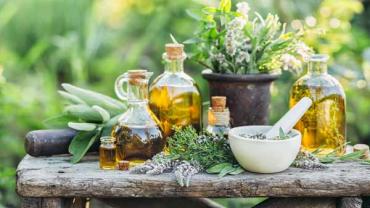
A study published in Proceedings of the National Academy of Sciences of the United States of America (PNAS) has discovered, what has been previously unknown to researchers, the underlying molecular mechanism that links a variety of culturally and genetically diverse plant extracts that have been used for several millennia to help support normal blood pressure. According to researchers from the University of California, Irvine, this discovery finally sheds some light on the hypotensive effects of these specific folk medicines that have been used traditionally for thousands of years and could potentially open up a source of therapeutic drug development to “enable future targeted therapies for conditions including hypertension and KCNQ5 loss-of-function encephalopathy”.
Commonly-known botanicals were tested in the study and showed the activation of KCNQ5, a specific vascular-expressed potassium channel within blood vessels, whereas the nonhypotensive plants did not. According to the researchers, this KCNQ5 activation feature that these hypotensive folk medicines have is lacking in the “modern synthetic pharmacopeia”. Lavandula angustifolia (lavender) was shown to be the most efficacious activator of the KCNQ5 potassium channel, followed by fennel seed extract (Foeniculum vulgare) and chamomile (Matricaria chamomilla). Furthermore, in one of the other hypotensive plants studied, Sophora flavescens (an herb used in traditional Chinese medicine), the team of researchers discovered aloperine, an active quinolizidine alkaloid that “is a KCNQ-dependent vasorelaxant that potently and isoform-selectively activates KCNQ5 by binding near the foot of the channel voltage sensor.”
As hypertension still remains the most crucial risk factor for cardiovascular disease, which is the top cause of mortality in U.S. adults, there is an urgent need for safer and more effective alternatives to anti-hypertensive medications. In a previous article, we discuss at length how hypertension is a silent, but deadly, condition that plagues nearly 7.5 million people annually around the globe, and several different dietary and lifestyle recommendations that could have a favorable impact on patients’ blood pressure. Dietary and lifestyle factors are the primary root cause that lead to elevated blood pressure, with obesity being the greatest risk factor of all. The risk for heart disease, diabetes, and stroke increases substantially according to the number of metabolic risk factors present, hypertension being one of them.
Fortunately, lavender, fennel seed, and chamomile are inexpensive and much more common to find. Patients who have hypertension may benefit from incorporating these plant medicines in their daily lives. They can be consumed as a hot or cold tea infusion from the loose herb throughout the day, can be used in the form of a plant extract, also called a tincture, or in the case for fennel seeds, can be sprinkled into foods while cooking. Loose teas and tinctures can be found in local health food stores, and online. Other ways to help support the health of patients’ blood vessels are to encourage more movement and exercise, increased exposure to sunlight, and to consume more colorful fresh vegetables and fruits that are rich in potassium, such as avocado, beet greens, sweet potato, swiss chard, potatoes with the skins, spinach, bok choy, and lima beans.